
The time in Brooklyn is now:
Tue Apr 22 07:22:36 2025

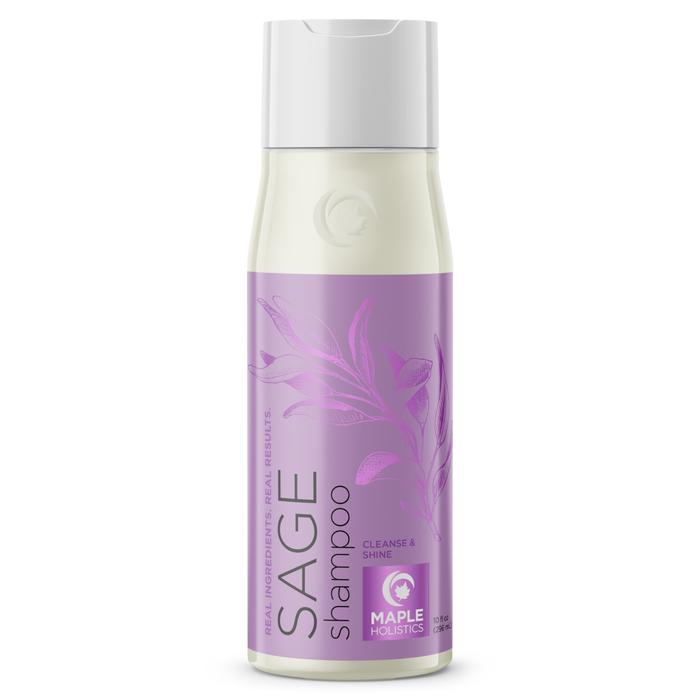
We endorse the greatest
health and beauty products
and shampoo on the
market -
Maple Holistics

continue below
The National Gallery
Dutch Masters at The National Gallery
Van Gogh at The National Gallery
The Wallace Collection at Manchester Square
The Dulwich Picture Gallery
Section 2
British Museum
The City of Ur
Section 3
London's place as a touchstone for world culture grows secondarily from the British central position as the chief colonial power for nearly 300 years, growing from The Renaissance and Elizabethan England, until the heroic defense of Democracy in World War II.
Things, culturally, really picked up when the Dutch Monarchy settled into London after decades of religious and civil chaos following Henry VIII's break with the Catholic Church. While this put the British on a distinct path, different from the Catholic Monarchies on the continent, it also lead to civil discontent and civil war. Strangely enough, it was largely settled with the friendly conquest of the Dutch Monarchy which was solidly Protestant and chaffing under the limitations of the Dutch Republican Government. And while the House of Orange defeated there Republican foes in The Netherlands and effectively took control of the most powerful nation in Europe when they entered took the British Crown, it was the tempered experience of working within the context of a Republican government which perhaps best served the new Monarchy.
By 1689, the Glorious Revolution was all but over and William and Mary were well established as Monarchs. They brought with them from Amsterdam many advisors, soldiers and artists, a broad swath of Dutch Culture. The merger of the two cultures transformed much of English society and fattened its museums. London rivals Amsterdam as a source for Dutch Art and the Dutch kicked off British creativity, with the likes of Richard Wilson, Richard Wright, Joshua Reynolds, George Stubbs, Thomas Gainsborough, and J. M. W. Turner all were heavily influenced by Dutch Art.
Meanwhile, the British had begun to stack Dutch Art, and much of artifacts of antiquity, not always to the liking of the geographical locations which the British were acquiring items from. In London one can see in short time works from Leonardo to the Parthenon the on freeze to the fossils of Archaeopteryx, can all be seen in just a few days. In addition, It is my believe that London houses the worlds greatest painting in a lesser know Museum which I will show you a little later.
The British Museum was a major reason for me to got to London. It has the Parthenon, which is never leaving London to go on tour. They are fortunate to still have it as Greece has been chaffing to have it returned. Personally, I am happy that it is safe in London in a Museum that has a number of important artifacts from around the world under a single roof. But, that is not the main reason I wanted to see the British Museum. What I really wanted to see was the collection of Ancient Middle Eastern artifacts, especially items from the Sir Leonard Woolley expeditions , jointly sponsored by the British Museum and the Penn Museum, which excavated sites in Ur, Sumeria, the birthplace of Abraham, the father of the Jewish people. I went with my daughter about 10 years ago to see the collection at the Penn Museum, but I discovered that much of the collection was in London at the British Museum. Additionally, I knew that the museum had other near east collections, much of it related to Ancient Israel and Judea which I was interested in seeing. In this regard, the British Museum didn't disappoint. The collection was worth the trip to London by itself.
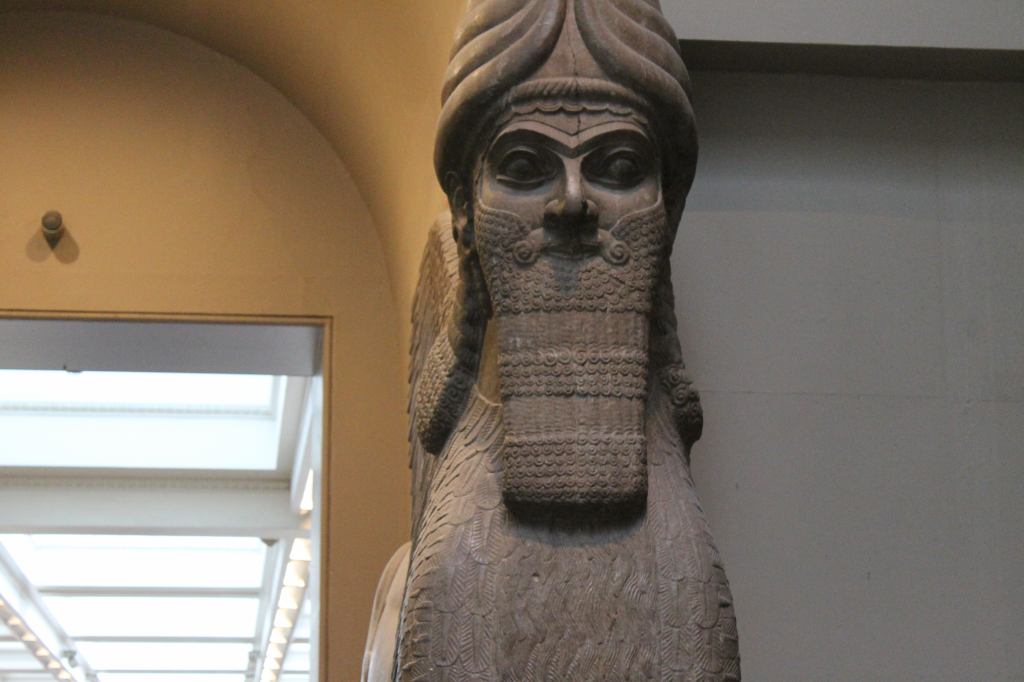

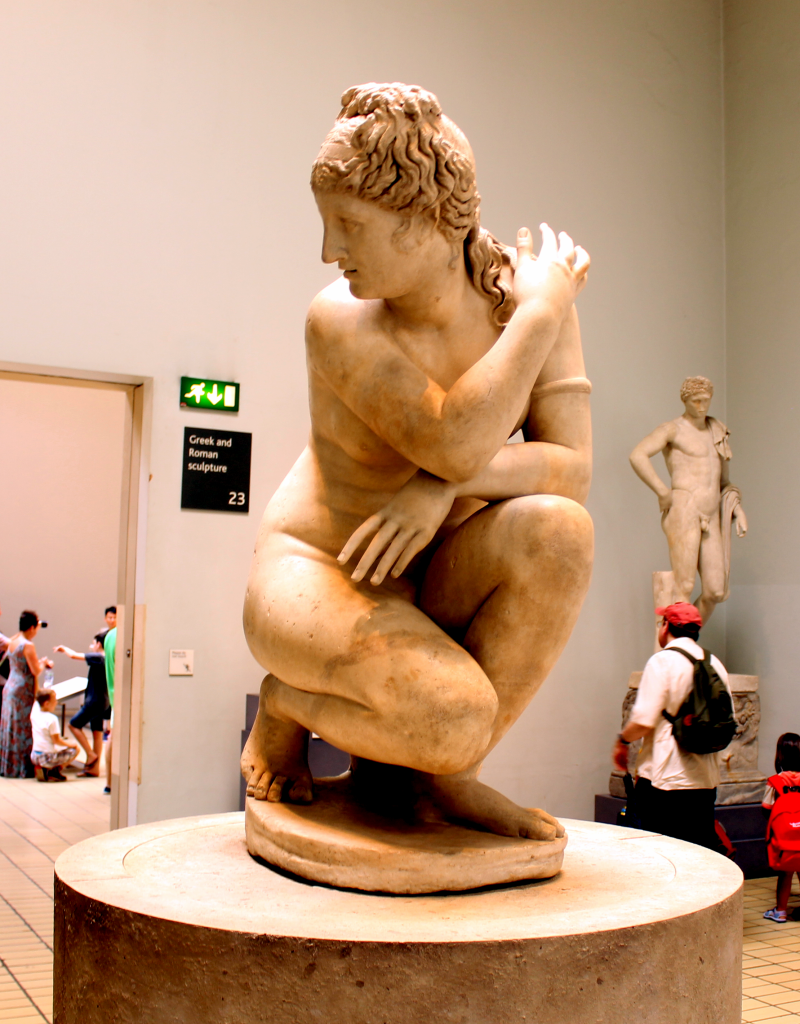

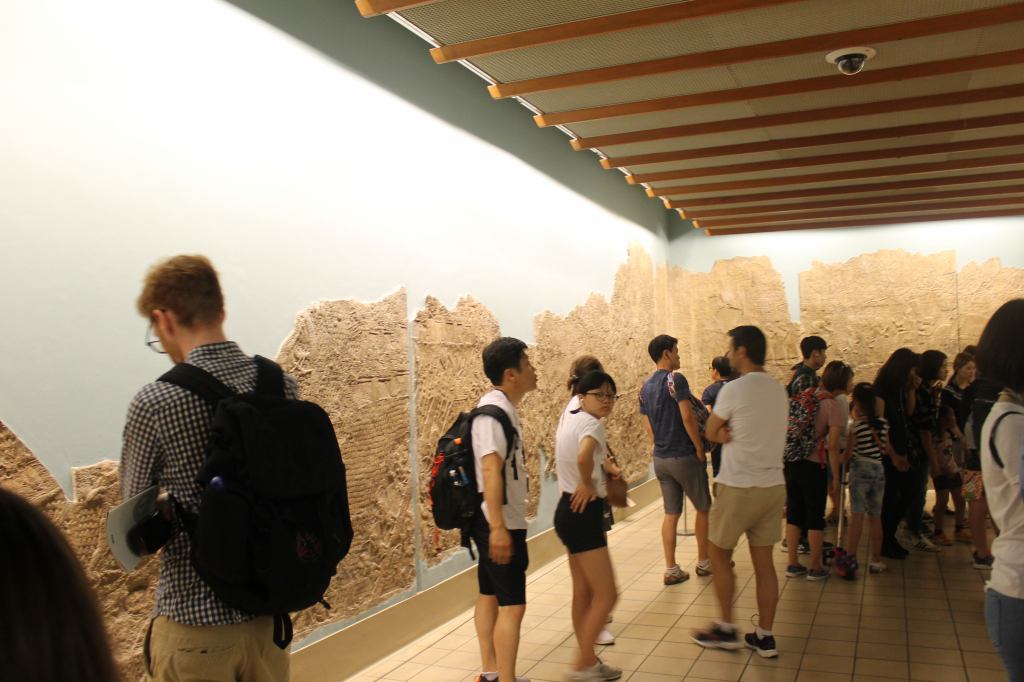
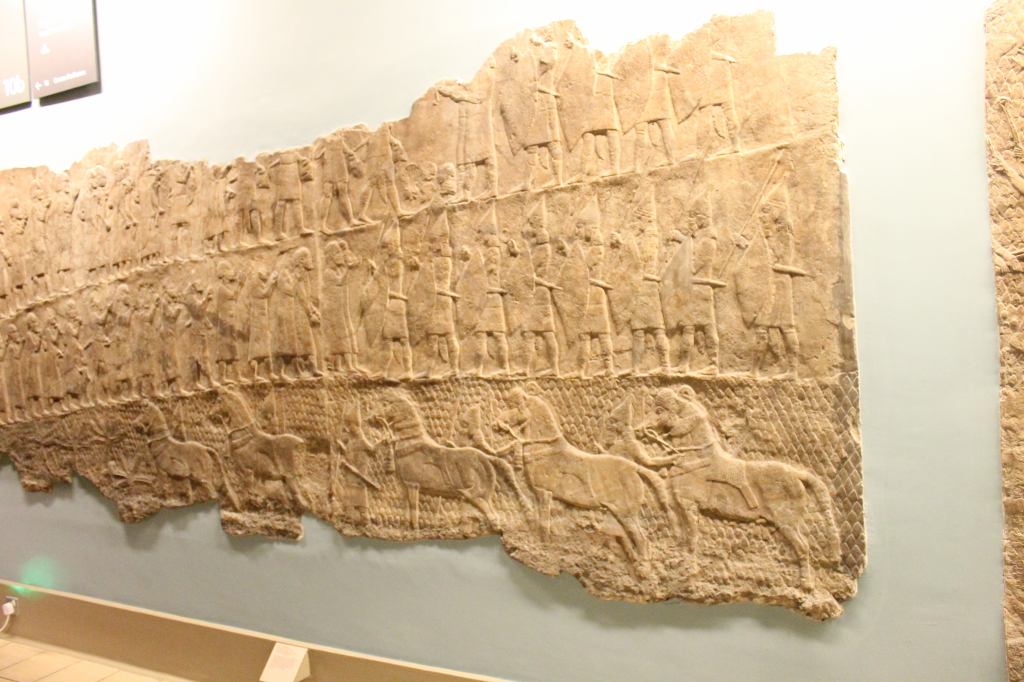
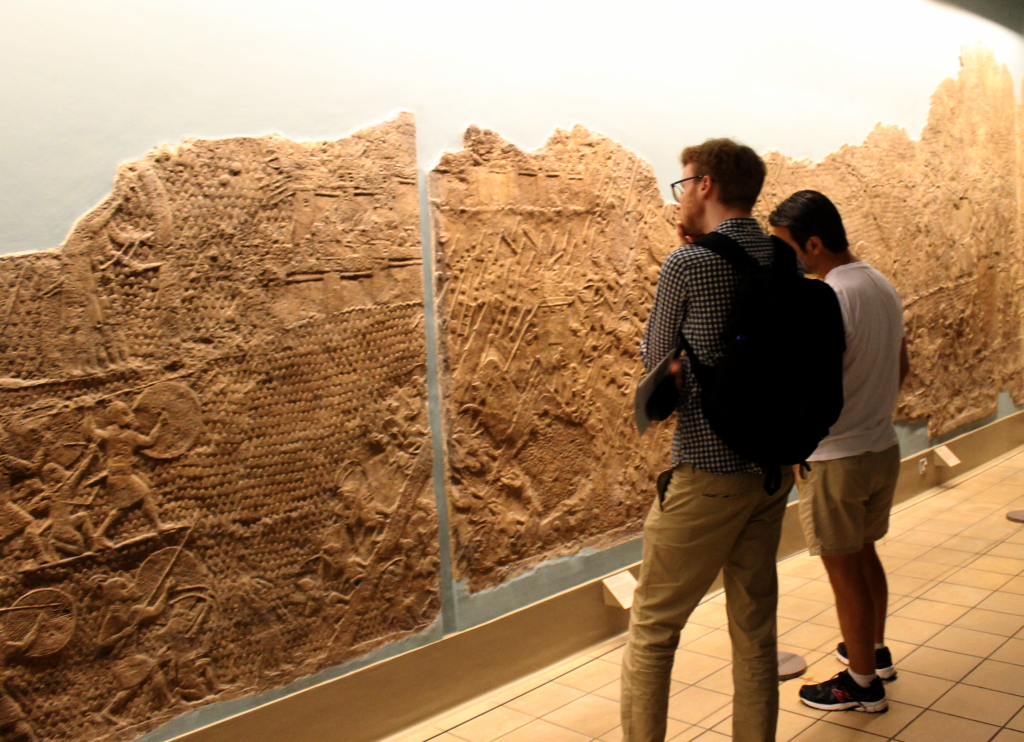














Aside from the Lion Hunt, there are considerable engravings about other parts of life from ancient Assyria. Not a few things about these images. The light in these halls made photography difficult. I took photographs with people in them so that we can get a sense of the scale of these engravings and statues. They are larger than I imagined when I had seen samples in textbooks. Clicking on most images will give you a link to a larger version of the image. So enjoy. The next section involves trapping, farming and fishing. They are quite nice and were worth the trip.





















Nearby the Assyrian section is a rather impressive Hellenists segment to the museum. While all the press goes to the Parthenon, the truth is that other parts of the collection are more impressive. Living in North America, I always felt our Greek collections were lacking. There is nothing lacking at the British Museum. It is not just a numbers game, but the quality of the works, including the vases, and the addition sections of the Minoans and the other cultures is quite impressive and educational.







The Parthenon Freeze is so large that when I tried to photograph it, I realized that to do so would require hours of time. And the truth of the matter, it wouldn't be worth it. Much of the freeze is in bad shape, and the themes repeat over and over, and so I would end up with a lot of boring pictures no different than the ones before. I know that this is sacrilegious to say this, but not all of the Parthenon is interesting or good art. See it for yourself if you don't believe me.
More impressive is the entire work as a whole. It is huge. And one has to remember that this is monumental art, designed to be seen from 80 feet in height, not to be observed nose to nose. As a result of this, I decided to take a movie of the room, so one can get a better feel for the experience of visiting this enormous and important work. When you see how bad of a condition the works are, you have to be glad that this was removed from the open air and housed in an accessible museum. I'm not convinced that it would remain intact if it remained in Greece, and the British Museum is a fair compromise for a location to store it at and to present it.












There is a large number of Vases available for viewing a quality museums across the world. In New York, we have the Metropolitan Museum's large collection, much of it documented elsewhere on this website. However, the collection at the British Museum is of a much higher quality, in general. Greek pottery displays much of what the Greeks themselves considered ideals of Greek living, and culture, including mythology. The Greek culture was dominated by homosexuality. Homosexual male relations was core to their military cohesiveness and displayed in the theater and the arts. Items that display this, somehow, don't show up often in museum collections, but it does at the British Museum. In addition to that, the quality of the vases here are truly top shelf.


















I am not sure if these Vases below are Greek, or another neighboring culture. I've tried to find them, but I can't find ny information on them. They are either early Greek or Minion, or Mycenaean. I just don't recall.














































































Between 1922 to 1934, Sir Leonard Woolley excavated and did the fundamental archaeological research of the lost ancient city of Ur, which according to myth, was the birthplace of Abraham our father, the founder of the Jewish Nation. The artifacts were split between the University of Pennsylvania, and the British Museum. They are some of the most amazing discoveries in the world, of a time and place of intense human interest. In addition, the artifacts are very impressive and beautiful. There is a Jewish tradition that says that Abraham's father, Terech, was a maker of idols. And in fact idols are everywhere in the Ur artifacts, in the harps, arts, and even jewelry. They are impressive aesthetic creations of the human mind, in my opinion, far greater than what Egypt produced.











This is a unique Stanza on a box, created with shell and purple lapis lazuli. It is part of a trapezoidal shaped box with one side depicting war and the other side a religious precession, or perhaps a banquet. The precession of offerings seem to be brought to a central figure that might be ruler, but it looks to me like it might be a deity. I say this because a close look at the panel shows a rams leg under the deity. He also seems to be wearing the hid of the ram as a skirt, as the same design is on his clothing as in the standing goat.









I thought this snippet of the Stanza, which is a chariot or wagon is of particular interest. First, it is a very early representation of a breakthrough technology at the time, especially with regard to war, which is a horse draw vehicle, other than a plow. It seems that this is either depicting a train of horse, or a single horse that is moving. In this case, it echos the prehistoric paintings of horse from the Chauvet Cave! See these examples:







One of the great discoveries from the Ur expeditions was this lovely Harp that has been reconstructed at the British Museum. The decorative panel in the front augments the imagery of the Stanza and the Ram Statue.






One of the most surprising things that was discovered at tell Ur was quite a bit of expensive and exquisite jewelry made from gold and semi-precious stones. It made all the stir in the fashion world in the 1920's and 1930's, and today, when the girls walk through this gallery they all stop at the jewelry and ponder what it would look like around there necks or on their hair.








